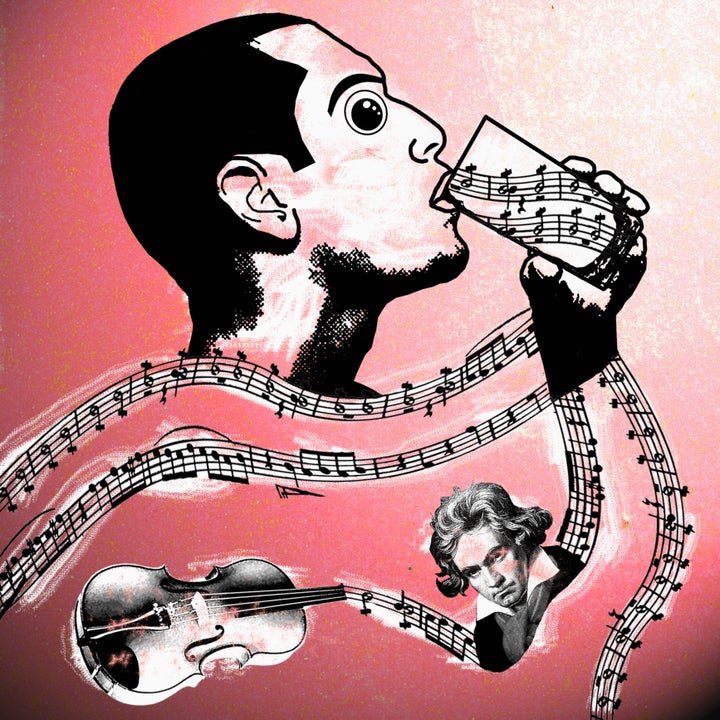
Berit Brogaard has had synesthesia, a neurological condition in which different senses combine in unusual ways, for as long as she can remember.
We often think of synesthesia as “seeing” sounds in different colors (also known as chromesthesia). But Brogaard experiences a more uncommon form of the condition, in which fearful thoughts cause an image of a creepy landscape to appear before her eyes.
“The fear-induced synesthetic images look something like a landscape that’s projected out into the world about 20 or 30 centimeters from my eyes,” Brogaard writes in The Superhuman Mind: Free The Genius in Your Brain. “When the fear is strongest the images are extremely vivid.”
Now a professor of philosophy and psychology at the University of Miami, Brogaard has studied many cases of synesthesia and other unusual cognitive and perceptual abilities at the Brogaard Lab for Multisensory Research.
As Brogaard and other scientists have observed, synesthesia can lead to remarkable cognitive abilities, including heightened creativity and memory. Famous synesthete Daniel Tammet ― who sees numbers and words in shapes and colors ― used this gift to set a European record, reciting the first 22,514 digits of pi from memory.
Brogaard herself knows well how synesthesia can be both a blessing and a curse. As a child, she was distraught by the recurring fear image ― which she describes as “bluish green with spiky mountain peaks” ― and her parents were concerned that she was having hallucinations. In high school, Brogaard finally figured out what was happening to her when she first came across the term synesthesia while researching a project on the science of color.
In adulthood, Brogaard’s synesthesia actually saved her life. One day, she was hiking along a trail in the Australian desert when the image blazed bright in front of her eyes. Looking past it, she saw that she was about to step on a poisonous snake, although her brain hadn’t yet consciously registered the threat. Had it not been for her brain’s unusual warning system, that day could have been her last.
But this unusual skill isn’t limited to those who were born with it. HuffPost Science chatted with Brogaard about how we can learn synesthesia ― and why that’s a good idea.
You have a very rare form of synesthesia. What forms does the condition more commonly take?
Synesthesia is basically when you have one sense combining with another sense in an unusual way, or one aspect of a sense combining with another aspect of a sense in a very unusual way. The most common form is when people see letters and numbers that are printed in black or colors ― they’re both visual, but it’s two things that don’t normally combine. Another common form is sound to colors, in which people hear sounds as colors.
There are two main types of synesthesia. One is when the image or color is projected out in front of you into the visual field, and that’s called projective synesthesia, and another type is when people just have it light up in their minds, and we call that associative synesthesia.
The mechanisms underlying those two types of synesthesia are different. In projective synesthesia, it’s an unusual connection between two areas in the visual part of the brain, and in associative synesthesia, it’s unusual feedback that goes from the upper part of the brain to the lower part of the brain.
In your lab, you’ve studied many cases of people developing synesthesia after experiencing accidents or brain injuries. How does this happen?
It’s rare that brain injuries lead to synesthesia, but we’ve seen cases where people develop extraordinary talents, including synesthesia. In those cases, you damage your brain in a very specific area, flocking the area with neurotransmitters. Those chemicals are sitting inside the neurons, and when the neurons are damaged, all of the chemicals are released all at once. Many of those chemicals are exciting the brain, and when you have that excitement of the brain, you tend to have extra-fast or extraordinary connections.
Sometimes, if that is elevated for a while (maybe a month), we’ve found that the brain can actually make new connections, and areas can connect to other parts of the brain that they don’t normally connect to. Synesthesia develops that way.
You argue in the book that, to some extent, anyone can hone this skill. What are some tricks for learning synesthesia?
It depends on what you want to learn. It’s really just associating two things into a single category. You pick a category and you start associating things in that category, which could be sound, and things in the other category, which could be colors. So once you start associating those things, you’re building new pathways.
Sometimes when people develop these synesthetic connections, for instance between sound and color, they can sometimes develop connections in other areas that have nothing to do with sound and color. The brain almost automatically starts associating other things with colors as well because it’s used to making those associations. The same thing happens when people train their brains to associate numbers with colors. Initially, that might not seem very useful, but what happens is that it becomes easy or almost automatic for them to associate colors with other things.
And why would we want to do that?
The thing is, you remember colors so much better than you remember a lot of other things ― emotions and colors are some of the things we remember best. If you can associate things with colors or emotions, your memories are going to stick better. So, sometimes you develop associations to things that are specific to what you want to do, and other times you just pick something that you find intriguing. You’ll see overall improvement in your performance with memory and sometimes also creativity.
CORRECTION: An earlier version of this story stated that Daniel Tammet set a world record for memorizing Pi, when in fact he set a European record. The story has been updated.
